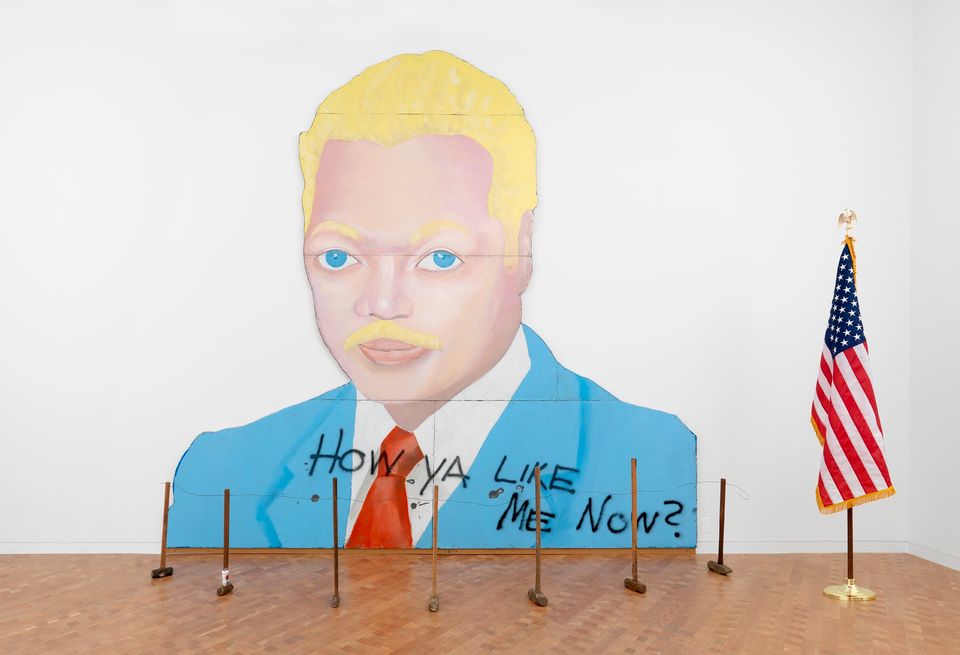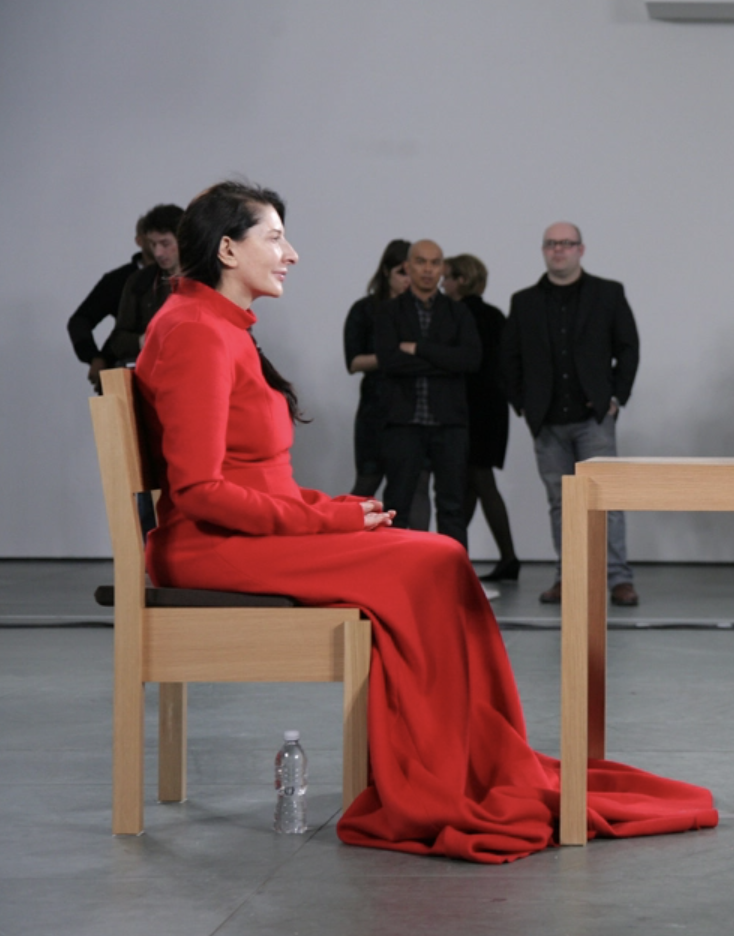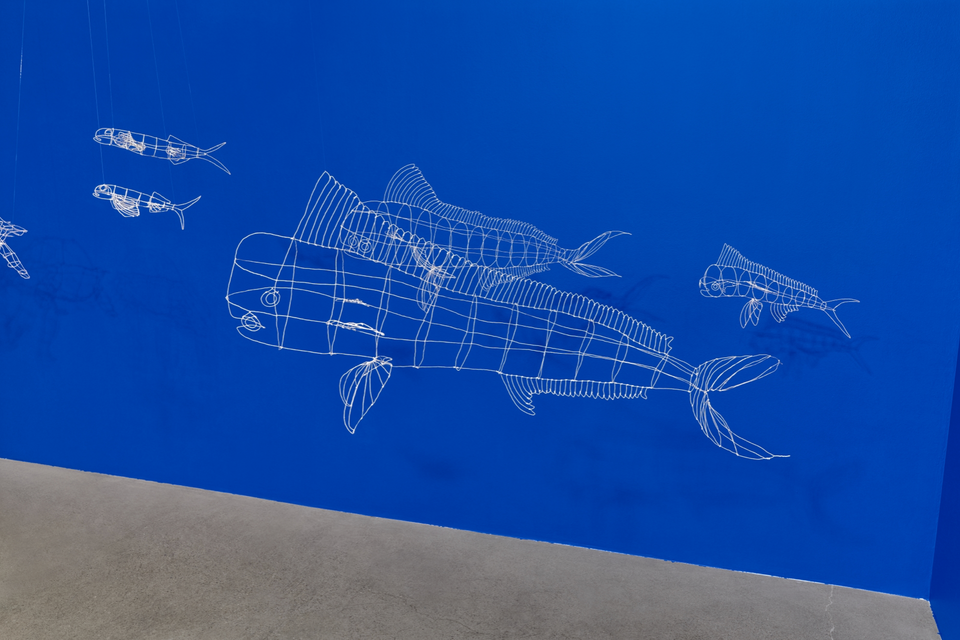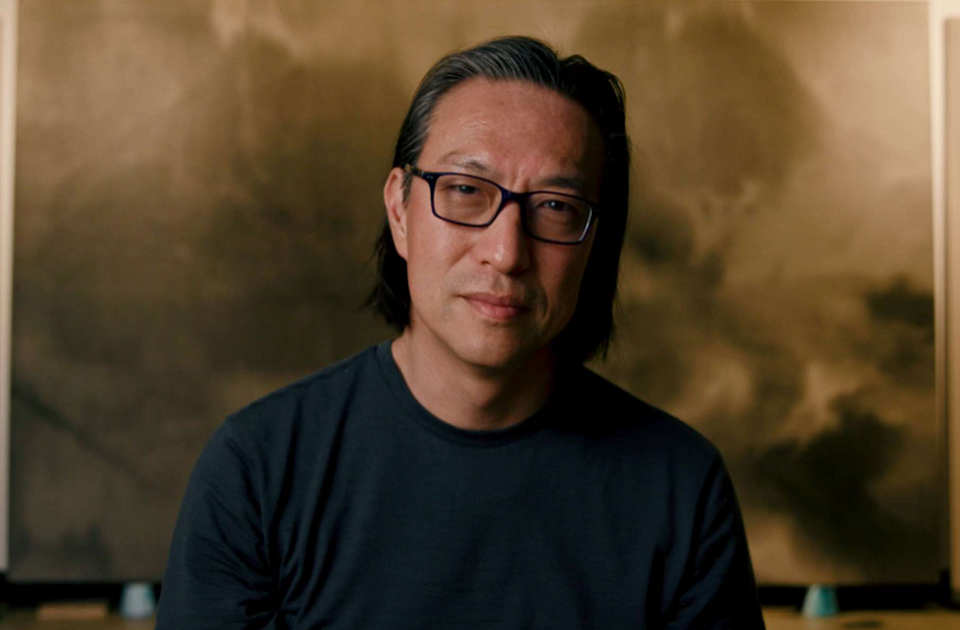In collaboration with Christians in the Visual Arts, The Curator is publishing previews of scholarly papers from the 2015 CIVA conference “Between Two Worlds: Contemporary Art and the Church” to be held at Calvin College on June 11-14. This paper comes from the Theology and Visual Arts Track.
Very little has been said about the unique and timely vision of David Hammons. Much of Hammons’ work investigates vision and visibility, seeing in general. Hammons’ historical catalogue over the last forty years has dealt with the narratization of black bodies and black culture in the American landscape and imagination. While taking cues from Hammons’ broader canon of work, I want to primarily investigate a single painting: How Ya Like Me Now? In this work, Hammons is concerned with the theological task of seeing, of having eyes to see, and Hammons chiefly interested in complicating our understanding of seeing, as he aims to reveal the loaded, politically-charged and value-laden nature of the task. How Ya Like Me Now? sheds light on the politics of value inscribed into vision, into visibility itself. What gets seen and what does not? Who notices? And what is at stake in such issues?
The Hammons Legacy
Hammons’ work has been investigating blackness, black bodies, and vision since the 1960s. Be it the Spade series, Higher Goals, or even the Bliz-aard Ball Sale, Hammons has been interrogating issues of racialized bodies and the ways in which they are narrated. Rather than speaking to the nature of the black body as such, though, Hammons work is primarily interested in the ways in which those bodies begin to take on certain meanings and inscriptions. That is, he is interested in certain ways of seeing those bodies.
Some of Hammons’ work is constructed out of certain artifacts and objects—both bodily and culturally—that might or might not be seen by different viewers. These works curiously involve half-eaten chicken wings, cheap wine bottles, and strands of African-American hair from barbershops around New York City. The fascinating, layered use of these abject, culturally-inscribed materials is certainly socioeconomic commentary on black perception and cultural rituals. Perhaps most interestingly, though, is the subtlety with which these objects are made present; they risk not being seen. Both because of their size and their cultural significance, Hammons has always been aware of the possibility of his work being missed, being overlooked or un-seen, even in the midst of his popularity. And this sort of tension—this liminal space between that which is seen and that which is not—is arguably where Hammons is most at home. This is precisely why artist Lorraine O’Grady pointed out that “Hammons tries to make art in which white people can’t see themselves.”
This slideshow requires JavaScript.
How Ya Like Me Now?
All of these tensions and questions seem to come to a head in a singular work of Hammons’. How Ya Like Me Now? is, and has been for some time, a controversial work. The 20ft. wide oil painting is a depiction of Jesse Jackson, a particular rendering of the man whom both demonstrates and confronts a particular way of seeing. Unlike the original campaign portrait that How Ya Like Me Now? draws on, this 1989 rendition features a white Jesse Jackson, carefully depicted with blonde hair and blue eyes. To the bottom right of the image, we find a spray-painted text, rhetorically asking the viewer, “How Ya Like Me Now?” The text looks like the final, sloppy feature from a previously careful vandal, and it is uniquely, confrontationally positioned to question anyone looking on. While this piece is now a historical artifact, it’s important to remember that it was constructed in the height of Jackson’s influence, in a very different Washington D.C. than what we know today. This is precisely why the piece was quite controversial in its early manifestations.
The original piece was supposed to be installed as an anonymous billboard in a D.C. parking lot as an initiative from the Washington Project for the Arts. The piece itself resembled a graffitied campaign poster, and there was no indication that this billboard had anything to do with Hammons. Removed from the gallery space, bereft of any informative placard, and ultimately placed into the masses, this piece could be read as a cruel, tasteless object of bigotry against one of the nation’s foremost black leaders. Things get all the more interesting, though, when we consider the fact that a group of young black kids destroyed the piece with sledgehammers just minutes after it was installed. The piece was sent back to Hammons for repair, and it was eventually displayed indoors after Hammons made the necessary repairs.
Hammons is an infamously mysterious artist. We ultimately can’t know whether or not he orchestrated or even commissioned the vandalism of the piece. There can be no doubt, though, that its destruction plays a defining role in our interpretation of the piece, in the implications and meanings of the piece itself, which would eventually go on to sell for 18 million dollars and wind up in a private collection. It was only after the destruction of the piece–a destruction that resulted from a certain vision–that it was reconstructed and properly installed into a gallery space, bearing witness to the values-laden nature of our vision. The mixed and tumultuous destruction/re-creation and installation of How Ya Like Me Now? speaks to the complex process of seeing that Hammons is so keen to investigate. The response to the work—i.e. its destruction—then, ultimately demands and legitimizes the power and necessity of its presence, of its ability to speak to whoever struggles to have eyes to see.
Vision/Seeing
In addition to investigating blackness, Hammons has been somewhat fascinated with the idea of seeing, with the process of things coming into sight. At his L&M Arts show in 2011, Hammons hung abstract paintings to the wall of the gallery space, only to cover most of them entirely with ripped and shredded tarps he supposedly found on the street. Touching on this point, ART-now editor Andrew Russeth argues that,
“Ambiguity has entered Hammons’ art in an even more purposive, physical way of late, as in his much-discussed 2011 show at L&M Arts in New York. The exhibition consisted of a number of punchy, swirling abstract paintings partially obscured by found tarpaulins or plastic sheets—the stuff of makeshift shelters, and the street—or, in one case, a hulking wooden armoire.
Take another instance, in which drawings made of Kool-Aid powder were concealed behind a curtain at a MOMA installation, only viewed through private, special appointments. By taking that which is discarded, that which is found in the alleyway and constructing it into something else, by simply placing it within the gallery space, Hammons creates something new, opens up the thing itself to a new way of reading and to multiple interpretations. It’s a way of pointing to obscured histories and discourses typically kept in the alleyway, in the barbershop. What sort of re-telling straight-talk is available in those liminal spaces that Hammons is inviting into the gallery?
Hammons has realized, perhaps before most, that value precedes sight. Similar to the way in which the values of the historian dictate what events and facts get re-told and thereby historicized, the values of the seer largely determine what gets noticed. Seeing itself is a loaded, value-laden process. We remain trapped in our own ideologies, our own subjectivities, prejudices and places within history. These are the dynamics of vision, of seeing, of what gets seen and then consequentially how that limited scope gets narrated within our own broader narratival framework. And this makes all the more sense when we begin to read Hammons’ investigation of race through the use of abject objects along these lines, particularly if he is making art in which white folks fail to see things, be they themselves or non-normed possibilities.
This notion is what makes the infamous Cheselden Case of 1727 so fascinating and troubling. First published in the Philosophical Transactions of the Royal Society of London, this study examined the vision of a recently healed, thirteen year old boy. Because the boy was seeing for the first time at the age of thirteen, the idea at play was that his vision, supposedly free of any sort of associative mechanics, was considered to be ‘pure,’ the norming norm. On the topic, Matt Elia writes, “His sight ostensibly granted philosophers and scientists an immediacy of access into the nature of sensual and especially visual perception, untainted by society and its contingencies.” Elia points out that this particular study, which ultimately pointed to the ‘natural’ fear the young white boy experienced upon seeing black bodies:
“was no sideshow or curiosity; it was an event of serious intellectual and scientific consideration in its day. And because, whether we wish to or not, we remain inside a shared historical trajectory with these figures of Western thought, it has remained an event worthy of ongoing critical consideration in our own day as well.
This study is of interest to our larger investigation of Hammons’ project for a number of reasons. Our socioeconomic status, our hyper-racialized bodies, operating according to varying narratives from various sources of power and ideological vantage points, play a massive role in determining how and what we see, as well as the value we ascribe to the things lying before us. The cultural force at work in this historicized pseudo-science is not any sort of side-stepping distraction. Rather, the findings of this test—cited and lauded by the heights of eighteenth century European intellectuals—demonstrates the way in which pathologies and ideologies of whiteness, as Elia concludes, “play a central, rather than incidental, role in the emerging aesthetic and scientific rationalities of Western modernity.”
What is it we value? What is it we are looking for, and what are we seeing at the cost of other details? These are the questions Hammons himself is asking. Hammons is keenly aware of the different ways we see things. His entire project has determined and borne witness to that. But Hammons does not stop there; this is merely his jumping off point. It is no stretch to say that he plays the role of specter to the contemporary art world, perpetually coming and going, sliding in and out of vision, beckoning that space to more open, inviting more just horizons and possibilities. He is aiming to, as was performed so clearly through the unique life of How Ya Like Me Now?, challenge the ways we see. He is confronting us, trying to teach us to see, to see a people whose lives have been shaped by a radically different set of socioeconomic realities, myths, norms and histories than that of dominant American culture of whiteness.
Having Eyes to See
The spirit of this new vision strikes at the heart of Jesus’ own mission. Jesus spoke both explicitly and implicitly about this sort of seeing, about having eyes to see (Mark 8). The parables themselves operate as this Hammons-esque sort of encoded telling. Even the disciples, the ones Jesus empowered—struggled to see and understand (Luke 8). The gospels are riddled with stories of people failing to see that infinite being made plain, even while it was unfolding in front of their own eyes.
Perhaps all the more interesting, though, is that this is not a historically contingent possibility. Jesus is quite clear in Matthew 25 that such mis-sights will characterize a certain populace of those of us who, according to their own interpretations and judgments, are in and of the kingdom of God. Jesus explains that this particular group—in failing to see Jesus in the their brothers and sisters—failed him, and in so doing missed that which Jesus was so concerned about. In looking at our brothers and sisters, they failed to see the infinite made plain. And this remains a distinct possibility for both you and me.
How Ya Like Me Now? operates according to the same parable-like dynamics, or what David Dark refers to as “cosmic plainspeak.”[1] In revealing the process and nature of our seeing as value-laden and culturally-inscribed, How Ya Like Me Now? speaks to both the nature of seeing and the content of a newly re-visioned sight. That is, in and through the disruption of the popular narrative on sight and racial narratization, the piece actually puts forward an alternative politic of sight and vision, a new way of seeing that bears witness to an unspoken treasure hidden in a field, a treasure that just might warrant the selling of everything we have. This is the timely vision of David Hammons. To what extent will we recognize ourselves in that white, blonde and blue image, in that which has been inscribed onto the surface? Or will we begin to peer beneath that paint?
Hammons has a legendary ability to influence his viewers; this is precisely why so much of his work has been controversial and so highly affective. It’s as if he can, both in his absence and through a preconceived notion, position pieces and space itself so as to determine the experience of the viewer. The experience of being subsumed, of being called into question is itself the theological vision and power at play in his work. Hammons, in positioning the piece from the all-too-common space of the roadside billboard and transitioning it into the gallery space, is trying to train us, trying to reveal something to us about the nature of our seeing. And in doing so, he’s ultimately bearing witness to what it might mean to have eyes to see, as well as positioning some things that might be seen by such eyes. Maybe the only truly proper reception of How Ya Like Me Now? is through prayerful reflection, by trying to cultivate a new form of sight, of seeing itself.
Citations
David Dark, The Sacredness of Questioning Everything (Grand Rapids: Zondervan, 2009), 33.




